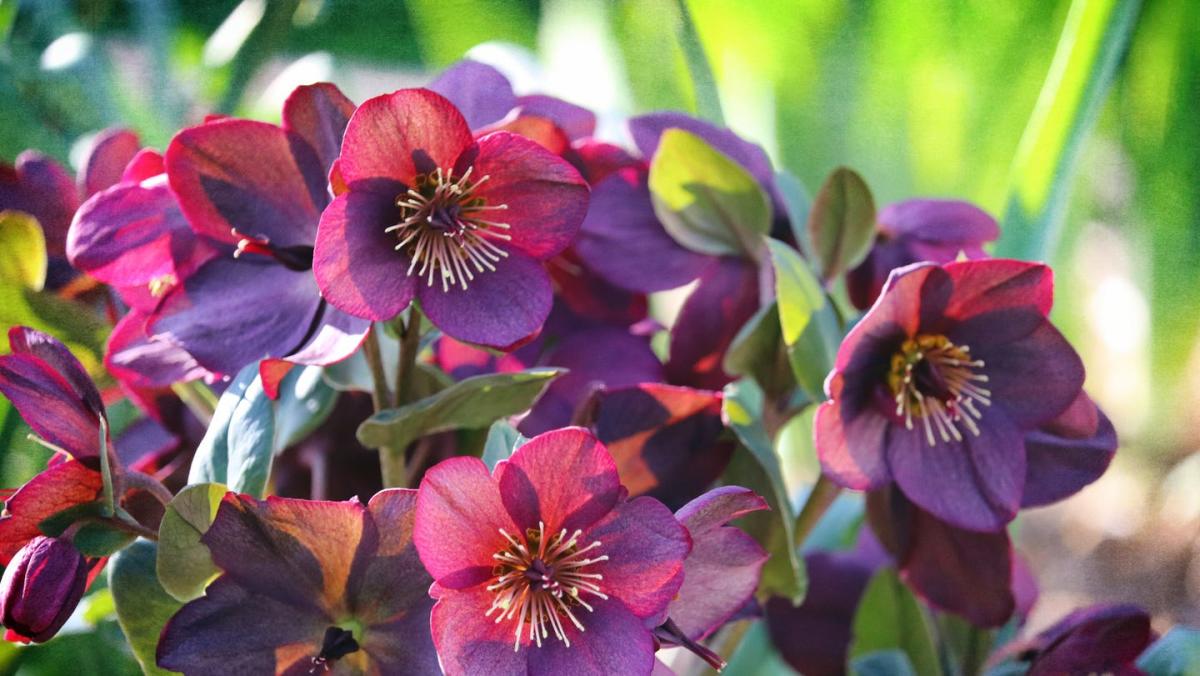Hellebores, prized for their exquisite blooms and long lifespan, are a welcome addition to any garden. These hardy perennials, often referred to as Christmas roses (*Helleborus niger*) or Lenten roses (*Helleborus x hybridus*), offer a stunning display of colour from late autumn through to early spring, providing a vibrant splash of colour even when snow still blankets the ground. With their glossy, evergreen foliage and nodding, rose-like flowers in shades of white, pink, peach, plum and burgundy â some even boasting speckles or ruffled sepals â hellebores are a true delight. Their attractive blooms also serve as a valuable nectar source for early pollinators. Growing in clumps approximately 60cm tall and 75cm wide, they are versatile enough to grace cottage gardens or cutting gardens alike.
Where Hellebores Thrive
These resilient plants flourish in a range of climates, thriving in USDA zones 4 to 9, with some hybrids even surviving in zone 3 (check your specific zone [here](https://phzm-prod.ars.usda.gov)). Their ability to bloom amidst winter conditions makes them an ideal choice for winter gardens. While slow-growing, these charming perennials are remarkably long-lived, often gracing gardens for over two decades. Native to Europe and Asia, hellebores are relatively low-maintenance and boast a natural deterrent to deer and rabbits. The blooms are also perfect for cut flower arrangements, and the seed heads add a unique touch to dried displays.
Hellebore Care: A Simple Guide
Cultivating hellebores is straightforward. They prefer partial sun, with morning sun and afternoon shade proving optimal, especially in warmer regions. Avoid full shade, as this can hinder flowering. When planting, ensure the plant sits at the same depth as it was in its original container; planting too deep can negatively impact flowering. Hellebores thrive in well-drained, fertile soil but are adaptable to various soil types. Spring or autumn is the ideal planting time, with companion planting alongside other spring bloomers like epimedium, daffodils, and bleeding hearts creating a beautiful display of contrasting textures and colours.
Once established, these plants are drought-tolerant, though consistent moisture is beneficial. Avoid waterlogged conditions. A spring application of slow-release granular fertiliser will promote healthy growth. [Natural Purpose Granular 4-Lb Organic Food](https://www.amazon.com/dp/B01M7P2SBQ?tag=syn-yahoo-20&ascsubtag=%5Bartid%7C10069.a.62672777%5Bsrc%7Cyahoo-us) is a suitable option.
Addressing Common Issues
Pest and disease problems are uncommon with hellebores. Winter weather may cause foliage to become tattered, but simply trimming it back to ground level in spring will encourage fresh growth in autumn. It's crucial to note that hellebores dislike being moved; choose a suitable location and leave them undisturbed to ensure optimal blooming and minimise recovery time. Dividing them can also impede flowering.
Popular Hellebore Varieties
The range of hellebore cultivars is extensive, offering a diverse selection of colours and forms. Some popular choices include:
âConfettiâ: Large, striking white double flowers speckled with burgundy.
âMaid of Honorâ: Dark pink double flowers.
âFirst Danceâ: Yellow flowers edged with burgundy.
âPhoebeâ: Pink flowers speckled with dark pink; an early bloomer.
âDark and Handsomeâ: Showy purple-black flowers.
Where to Purchase Hellebores
Several online retailers offer a variety of hellebore cultivars. [Burpee](https://www.burpee.com) offers several varieties including 'Phoebe' (£15.26), 'Wedding Party Wedding Bells' (£16.93), 'Wedding Party Dark and Handsome' (£16.00), 'Wedding Party Bridesmaid' (£16.93), and 'Wedding Party First Dance' (£16.00).
In conclusion, hellebores offer a low-maintenance yet rewarding addition to any garden, providing years of beautiful blooms with minimal effort. With careful selection of location and simple care, these elegant plants will bring beauty and vibrancy to your outdoor space for decades to come.

